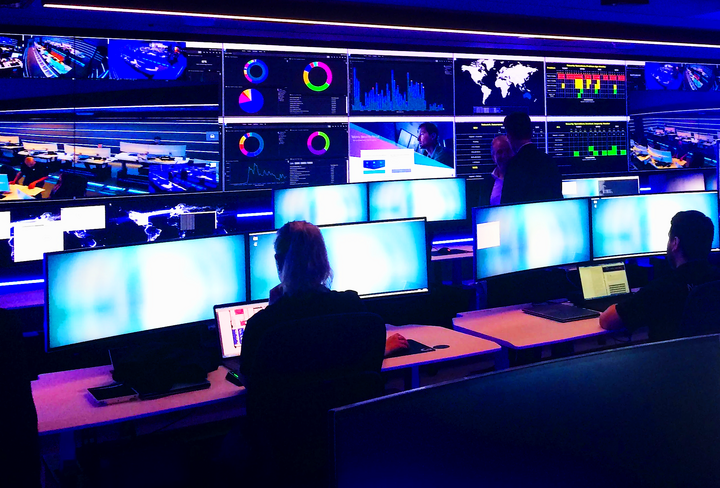As we enter 2024, the cybersecurity industry is on the brink of transformative change. Cyber threats are not only increasing in frequency, but are also becoming more complex and sophisticated, challenging traditional cybersecurity models. In this rapidly evolving digital landscape, understanding the upcoming cybersecurity trends is a matter of foresight and preparation.

With 2024 just around the corner, organizations must ensure they are well prepared for new cyber threats. (Photo: Brookings)
Sharing this story, Michelle Drolet (CEO of Towerwall, a cybersecurity company specializing in providing professional cybersecurity solutions), commented that in 2024, for the cybersecurity field, we are entering an era where advanced AI tools and complex social engineering tactics are changing the industry's game. To avoid potential cyber threats, businesses, governments and individuals must embrace these emerging trends.
The Rise of Cybersecurity AI
By 2024, the role of Artificial Intelligence (AI) in cybersecurity will expand to include automated response and predictive analytics, where technology professionals and businesses use AI to predict future cyber threats by analyzing historical data and current internet trends.
Integrating AI into cybersecurity applications can improve threat detection and timely incident response. For example, AI can help identify anomalies or deviations, which can indicate potential cybersecurity threats.
Additionally, as cyberattacks become more sophisticated, AI’s ability to analyze massive data sets and identify patterns will become key. As AI has become a major part of the toolkit of abusive cybercriminals, it is expected that AI will also become a mainstay of cybersecurity solutions.
Additionally, we may also see the emergence of AI-driven security chatbots, which are programmed to independently identify and neutralize cyber threats, making the cybersecurity industry more proactive.
Concerns
With events like the 2024 US election and the upcoming 2024 Summer Olympics looming, opportunistic actors may intensify their cyber attacks.
In 2021, the Olympics in Japan faced 450 million cyber attacks on their infrastructure, 2.5 times more than the 2012 Summer Olympics in London. Experts say major events such as the US election and the 2024 Summer Olympics will be high-value cyber attack targets next year.
Email spoofing, phishing, and even fake websites created to look like they are related to these events will increase. Additionally, disinformation campaigns will continue to be deployed through social media.
Ransomware attacks on the rise
Ransomware will remain a formidable threat in 2024, with increasingly sophisticated attack tactics and increasingly aggressive extortion negotiations. According to Cybersecurity Ventures, cybercrime losses are expected to exceed $10.5 trillion globally by 2025, up from $3 trillion in 2015.
This alarming escalation requires robust contingency strategies that include employee training, cybersecurity insurance, negotiation expertise, and incident response plans. Companies can perform tasks such as penetration testing, validating network integrity, identifying unauthorized activity, and monitoring suspicious behavior.
The growing complexity of cyber threats underscores the security trends of 2024, highlighting the need for advanced mitigation strategies. Organizations will need to understand these trends, ensure best practices are implemented, consider partnering with outsourced cybersecurity experts to navigate the security landscape, ensure robust cyber defenses, and be ready for a sustainable future.
HUYNH DUNG (Source: Forbes/Splashtop/Techopedia)
Source



![[Photo] 60th Anniversary of the Founding of the Vietnam Association of Photographic Artists](/_next/image?url=https%3A%2F%2Fvphoto.vietnam.vn%2Fthumb%2F1200x675%2Fvietnam%2Fresource%2FIMAGE%2F2025%2F12%2F05%2F1764935864512_a1-bnd-0841-9740-jpg.webp&w=3840&q=75)

![[Photo] National Assembly Chairman Tran Thanh Man attends the VinFuture 2025 Award Ceremony](/_next/image?url=https%3A%2F%2Fvphoto.vietnam.vn%2Fthumb%2F1200x675%2Fvietnam%2Fresource%2FIMAGE%2F2025%2F12%2F05%2F1764951162416_2628509768338816493-6995-jpg.webp&w=3840&q=75)











































































































Comment (0)